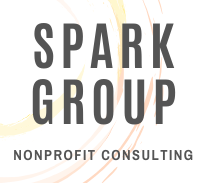Program Evaluation and SMART Goals
In a previous blog post, we discussed the importance of program evaluation, and shared four easy steps to help evaluate your level of success after finishing a program: considering the Strengths, Weaknesses, Opportunities, and Threats (SWOT) facing your program/organization.
But organizational programming generally runs in cycles; programs rarely follow a single, linear process. Similarly, it’s very useful to think of evaluation as part of a cycle, rather than a linear process. This allows for more flexibly to consider the evaluation process at the start of a program cycle, rather than only at the program’s end.
Program Evaluation: Looking back, to look forward
There are many benefits to approaching evaluation at the start of a program cycle – the most important being that gathering data and information becomes so much easier throughout the program cycle if you’ve thought about what and how information will be gathered before you begin.
Whether you are starting a new program, or starting a new evaluation process for an ongoing program, it’s important to consider setting S.M.A.R.T goals.
What are SMART goals?
S.M.A.R.T. goals are Specific, Measurable, Achievable, Relevant, and Time-bound.
As we elaborate on the acronym, we can continue to use the example from our previous blogpost on program evaluation.
“Imagine you run a community center. Each fall, you conduct a back-to-school giveaway for children in the community. Volunteers enjoy this program; they donate supplies and backpacks, and you can distribute 100 backpacks filled with supplies each year.”
Let’s say that after considering your SWOT analysis, you decide you want to grow your program, and reach more students.
The next step is then to create SMART goals that will enable you to monitor your program, collect data to help you measure and communicate your successes, and evaluate your process when the program cycle reaches its end. Doing so will also allow you to zero in on your program strengths, any weaknesses, and opportunities or threats, to set SMART goals for the *next* program cycle, as well!
SMART goal examples
Here are what some potential SMART goals might look like.
Specific – Rather than simply saying: ‘We will grow our program to reach more students,’ try to tie in some specific targets: “We will grow our back-to-school giveaway program by 50% …”
Measurable – Make sure your targets can be easily measured, so you have good, usable data for program evaluation: “…by distributing 150 backpacks with school supplies.”
Attainable – You can be confident you have set an attainable goal because your SWOT analysis indicated you have the resources and staff necessary to do so. You want your goals to be realistic and achievable, as success in meeting program goals keeps organizational morale high, and allows you to continue working towards your mission in the long-term.
Relevant – It’s always a good idea, at the beginning of a new program cycle, to make sure your program and program goals align with your organizational mission and vision. If the mission of your community center is related to support the educational needs of community members, then you are all set.
Time-bound – It’s important to tie a specific time-frame for evaluation into your goals, so everyone involved in the process of implementing the program and evaluating it upon completion has a clear picture of the beginning and ending point. This again helps keep staff, volunteers, funders, etc. motivated and focused, knowing that there is an expectation for achieving the desired results by a particular point in the future. To continue our example from above, “During the back-to-school drive in August 2021, [name of Community Center] will grow our giveaway program 50%, by distributing 150 backpacks to area students.”
The benefits of SMART goals
With these goals, you have a clear picture of what you will be measuring (the number of backpacks being distributed), clear criteria for evaluative success (50 more backpacks distributed than in previous years), you have a pretty good indication that you can be successful, as you have identified the resources and processes needed to be successful (purchasing backpacks in bulk from donated funds). You also have a clear timeline indicated to begin the evaluation process.
Having SMART goals set from the beginning of a program cycle make the evaluation process go smoother, and it helps you collect good data and a clear indication of success to communicate to your community and partners, funders, staff, etc. These things in turn can lead to greater success, and further growth, for your program in the future.
⭐ Join our weekly newsletter where we share tons of exclusive tips, tools, grant opportunities, and resources to our subscribers. Subscribe on the Spark Group home page.




